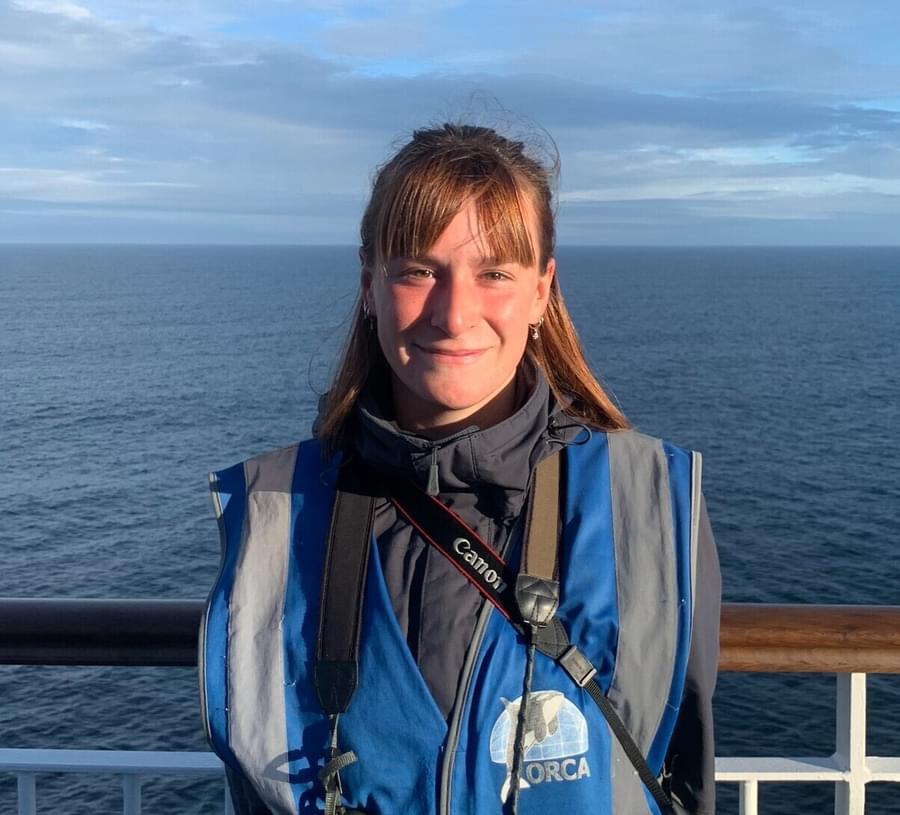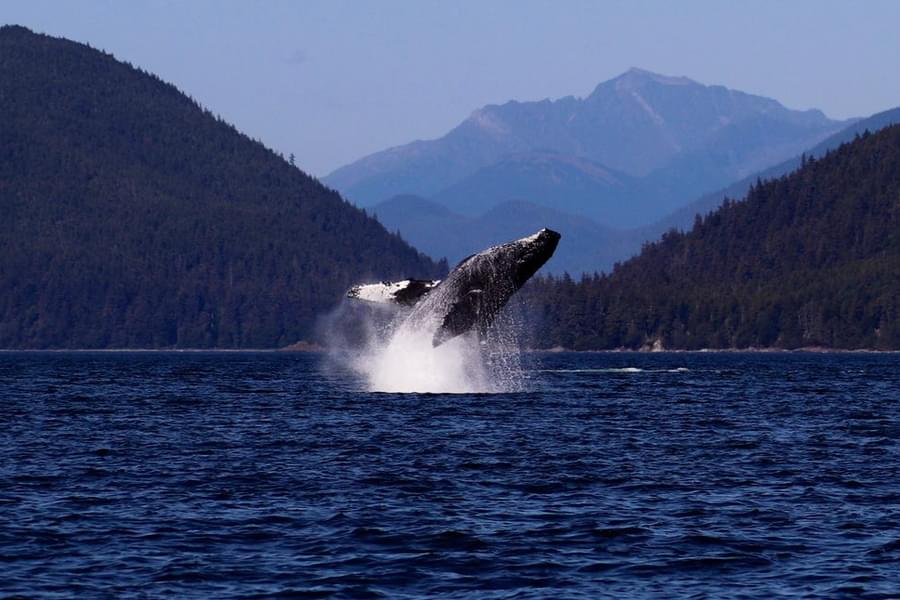Hi everyone, my name is Maria, and I’ll be ORCA’s Marine Mammal Observer (MMO) working on board Cunard’s Queen Elizabeth this year.
This summer, the Queen Elizabeth (QE) will be undertaking multiple itineraries in the North-East Pacific, which will see the ship sail through areas with high densities of whales. I am going to be on board working with the bridge crew to help reduce the risk of ship strike whilst collecting valuable data with the aim of better understanding this threat.

What is ship strike?
Ship strike is defined as a forceful impact between any part of a watercraft, most commonly the bow or propeller, and a live cetacean, often resulting in its death, major injuries or physical trauma. Whilst ship strike can happen to any cetacean, large whales seem to be particularly vulnerable, owing to the fact they are slower moving and spend a lot of time at the surface.
When a ship hits a whale, the likelihood of mortality is high. However, non-fatal injuries include gashes from propellers and fractured spines, preventing the whale from swimming, breathing or feeding properly. This leads to individuals suffering considerably over hours, days, weeks or sometimes even months.
Ship strike is an under-reported threat, with most evidence coming from dead whales that have stranded, and therefore accurately assessing the conservation implications is difficult. Despite the fact that ship strike is difficult to quantify, we know that it is one of the main human-induced threats to whale populations, and it is estimated that thousands of whales might be killed as a consequence every year.
My role on board
I am going to be on board the QE for three months, during which time we will make multiple trips from Vancouver up the Alaskan coast. Luckily for myself and the guests on board, this is a fantastic place to spot whales! Several species of whale can be found in Alaskan waters, including humpback whales, which migrate up to this region in the summer months to feed in vast numbers after spending the winter breeding at lower latitudes.
However, as the ship travels through these high-density areas, the risk of ship strike is increased. One such area is Glacier Bay National Park, protected under the 1964 Wilderness Act. Cruise ships must have a permit to enter the park, and one of the conditions of the permit is to have an MMO on board - and that’s where I come in!
As part of my MMO role, I’ll be providing ship strike training to the crew, explaining what to look out for and what to do when whales are sighted in order to reduce the risk of a ship strike occurring. I’ll also be up on the bridge too, maintaining a watch for whales and pointing them out to the crew so that action can be taken to avoid a collision where necessary.
I will also be collecting valuable data for ORCA, who are undertaking a very exciting project to investigate how large whales react to ships, with the aim of better understanding the threat of ship strike. I’ll be collecting data on whale distribution and behaviour, looking at how close the whales get to the ship and how they react (if at all). This data will not only help us identify ship strike hotspots but also understand how whales react to ships, therefore giving an insight into how best we can prevent collisions occurring.
I am so excited to get started with this important project - stay tuned for an update in a few weeks!

